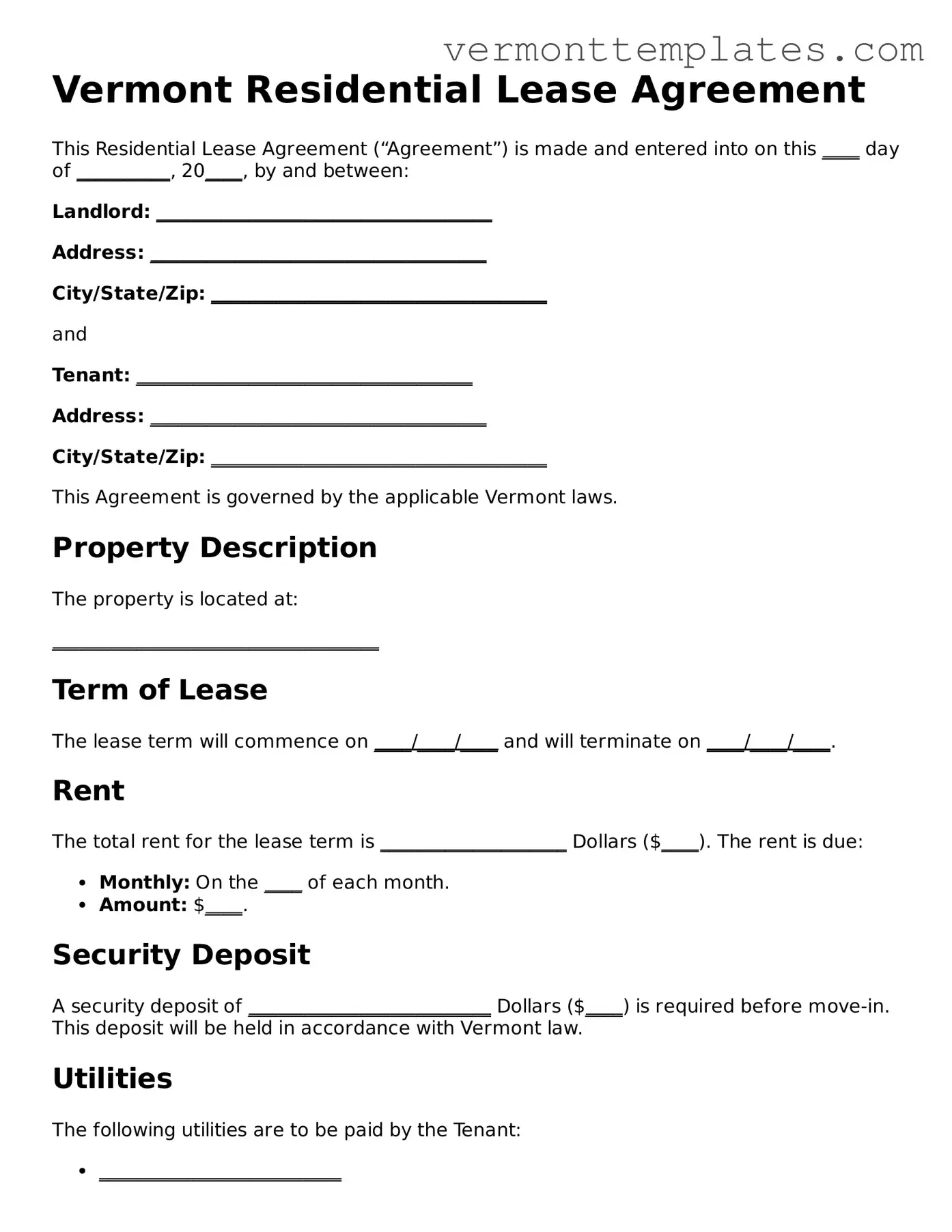Vermont Residential Lease Agreement
This Residential Lease Agreement (“Agreement”) is made and entered into on this ____ day of __________, 20____, by and between:
Landlord: ____________________________________
Address: ____________________________________
City/State/Zip: ____________________________________
and
Tenant: ____________________________________
Address: ____________________________________
City/State/Zip: ____________________________________
This Agreement is governed by the applicable Vermont laws.
Property Description
The property is located at:
___________________________________
Term of Lease
The lease term will commence on ____/____/____ and will terminate on ____/____/____.
Rent
The total rent for the lease term is ____________________ Dollars ($____). The rent is due:
- Monthly: On the ____ of each month.
- Amount: $____.
Security Deposit
A security deposit of __________________________ Dollars ($____) is required before move-in. This deposit will be held in accordance with Vermont law.
Utilities
The following utilities are to be paid by the Tenant:
- __________________________
- __________________________
The Landlord will be responsible for:
- __________________________
- __________________________
Maintenance and Repairs
The Tenant agrees to maintain the premises in a clean and safe condition. Any necessary repairs should be reported to the Landlord promptly.
Alterations
The Tenant shall not make any alterations, additions, or improvements to the premises without the Landlord’s prior written consent.
Termination
- Tenant’s obligations under this agreement will terminate upon expiration of the lease term, unless the lease is renewed.
- Either party may terminate this Agreement by providing at least 30 days written notice prior to lease termination.
Signatures
By signing below, both parties agree to the terms of this Residential Lease Agreement.
Landlord Signature: __________________________________ Date: ______________
Tenant Signature: __________________________________ Date: ______________
